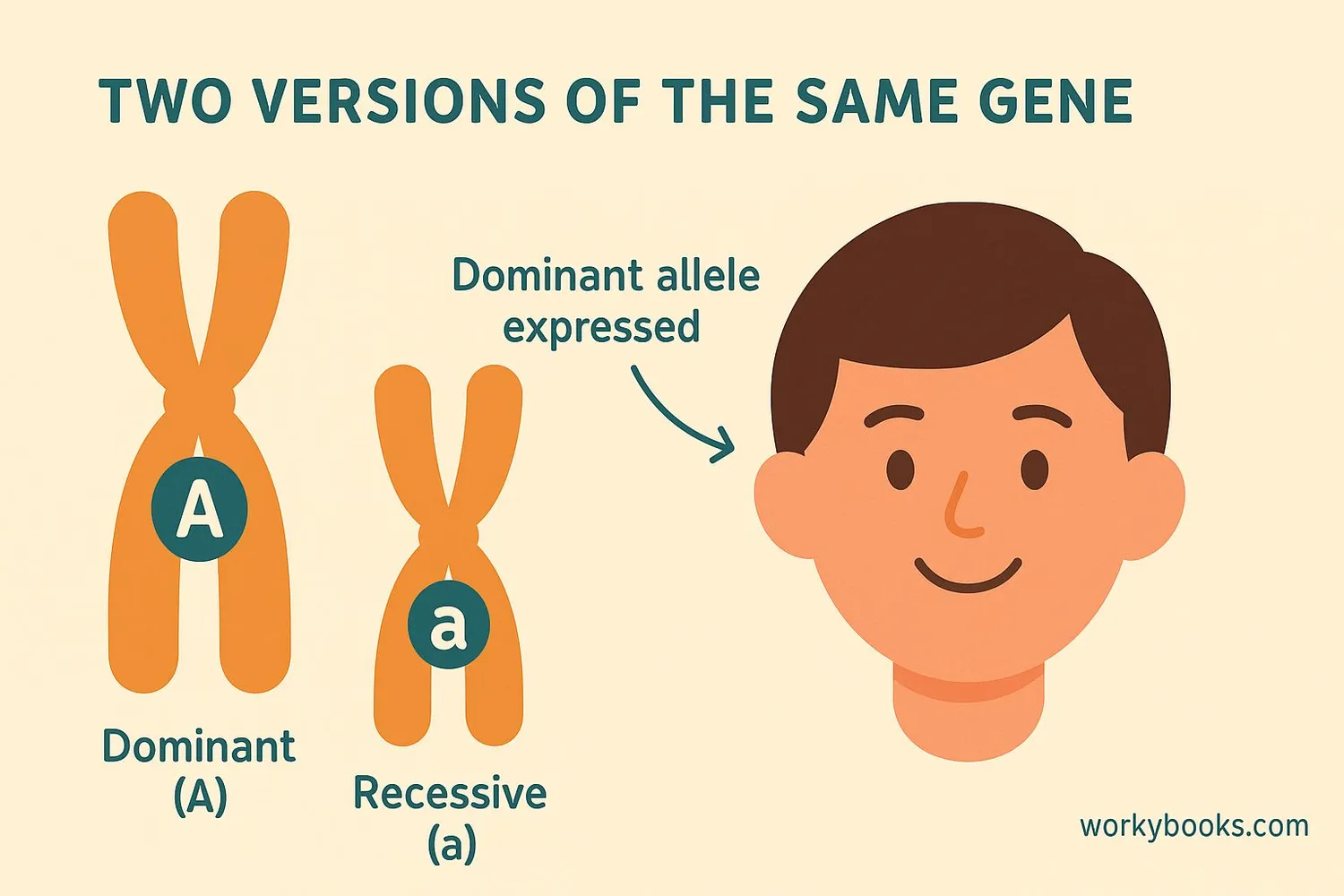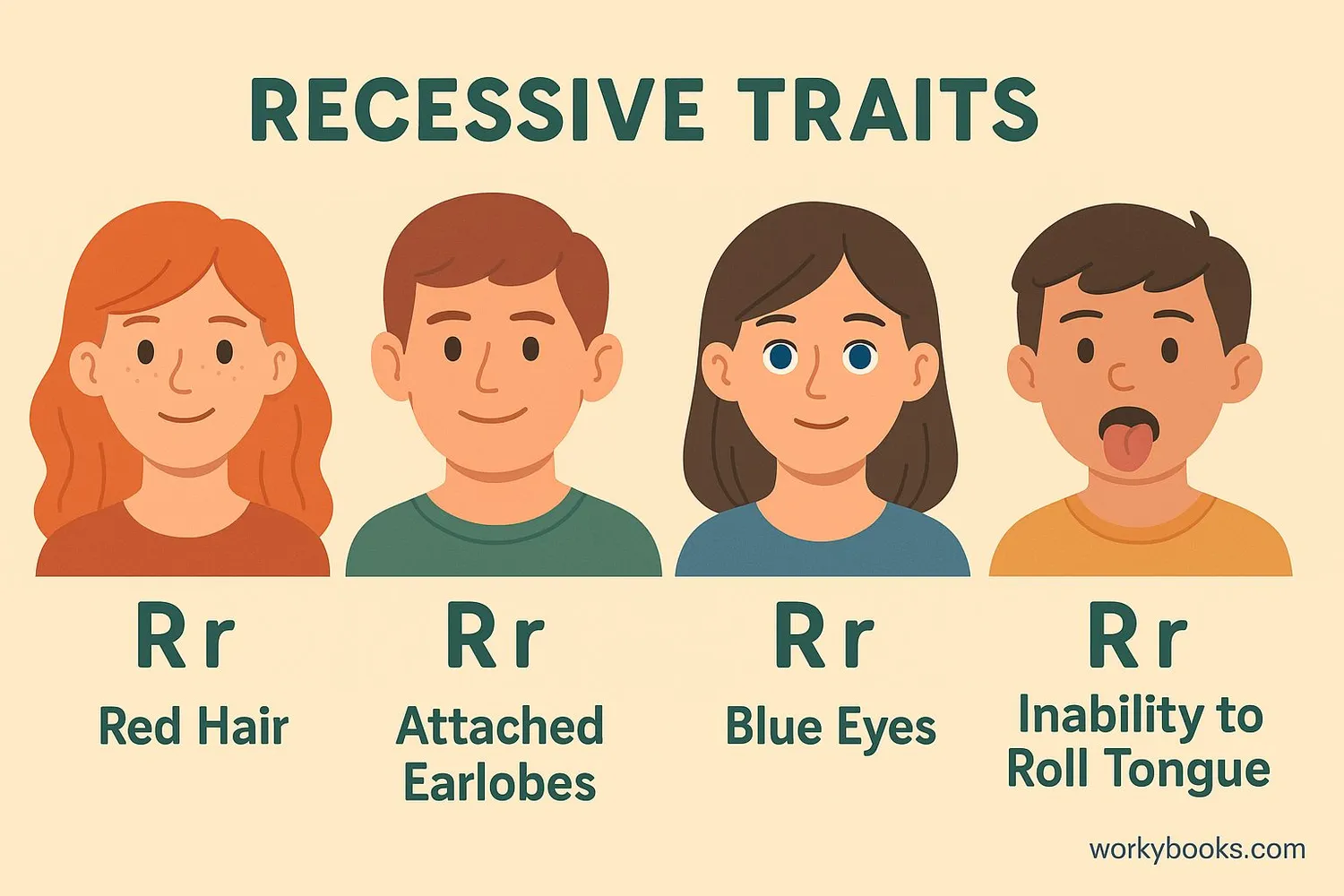Recessive Alleles - Definition, Examples, Quiz, FAQ, Trivia
Discover how hidden genetic traits are passed from parents to children
What is a Recessive Allele?

A recessive allele is a version of a gene that only shows its trait when there are two copies of it. Alleles are different versions of the same gene. For example, the gene for eye color has alleles for blue, brown, green, etc.
Recessive alleles are like hidden instructions in your DNA. They're still there, but they don't show up if there's a dominant allele present. You need two recessive alleles (one from each parent) for the recessive trait to appear.
Genetic Fact!
You can carry a recessive allele without showing the trait. This is why traits can skip generations!
Recessive vs. Dominant Alleles
Recessive Allele
Only shows when both copies are recessive
Dominant Allele
Shows even if only one copy is present
How Recessive Alleles Work
Recessive alleles follow specific patterns of inheritance. Scientists use Punnett squares to predict how traits will be passed from parents to children.
Here's how recessive traits work:
Homozygous
Two identical alleles (BB or bb)
Heterozygous
Two different alleles (Bb)
Carrier
Has one recessive allele but doesn't show the trait
For a recessive trait to appear, a person needs to be homozygous recessive (bb). If they have at least one dominant allele (BB or Bb), the dominant trait will show.
Family Inheritance
Recessive traits can appear in children even if neither parent shows the trait, as long as both are carriers!
Recessive Alleles in Genetics

Recessive alleles play important roles in genetics and can affect many traits we see in humans, plants, and animals.
Human Traits
Blue eyes, red hair, attached earlobes, inability to roll tongue
Plant Traits
White flowers, dwarf plants, specific leaf shapes
Animal Traits
Specific coat colors, short tails, certain patterns
Recessive Disorders
Sometimes recessive alleles can cause genetic disorders when a person has two copies. Examples include:
• Cystic fibrosis
• Sickle cell anemia
• Tay-Sachs disease
• Albinism
Genetic counselors help families understand the chances of passing on recessive disorders.
Genetics Quiz
Test your knowledge about recessive alleles with this quiz! Answer all 5 questions to see how much you've learned.
Frequently Asked Questions
Here are answers to common questions about recessive alleles:
Fun Genetics Trivia
Discover some amazing facts about recessive alleles and genetics!
Royal Inheritance
Hemophilia (a recessive disorder) ran in European royal families. Queen Victoria was a carrier and passed it to several of her descendants, including the last Tsar of Russia's son.
White Tigers
The beautiful white coat of Bengal tigers is caused by a recessive allele. Only about 1 in 10,000 wild tigers are born white, but they're more common in captivity due to selective breeding.
Mendel's Peas
Gregor Mendel discovered recessive traits by studying pea plants in the 1860s. He found that white flowers (recessive) could appear in purple-flowered plants' offspring.
Recessive Red
Red hair is a recessive trait caused by a mutation in the MC1R gene. Only 1-2% of humans have red hair, making it the rarest natural hair color!


